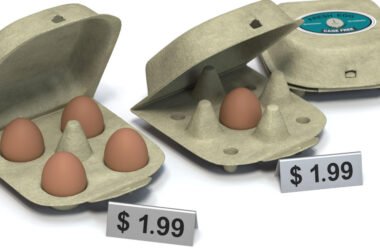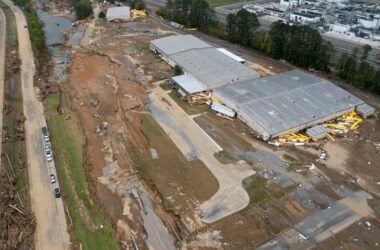The pandemic created an financial disaster in contrast to any recession on file. So maybe it shouldn’t be stunning that the aftermath, too, has performed out in a manner that just about no economists anticipated.
When unemployment soared within the first weeks of the pandemic, many feared a repeat of the lengthy, gradual rebound from the Nice Recession: years of joblessness that left many employees completely scarred. As an alternative, the restoration within the labor market has been, by many measures, the strongest on file.
In early 2021, some economists foresaw a surge in inflation. Others had been skeptical: Related predictions lately — in some instances from the identical forecasters — had failed to come back true. This time, nonetheless, they had been proper.
And when the Federal Reserve started making an attempt to tamp down inflation, there have been warnings that the job market was positive to buckle, because it had threatened to do each time policymakers started elevating rates of interest too quickly within the decade earlier than the pandemic. As an alternative, the central financial institution has raised charges to their highest stage in a long time, and the job market is holding regular, or maybe even gaining steam.
The ultimate chapter on the restoration has not been written. A “gentle touchdown” just isn’t a carried out deal. However it’s clear that the financial system, notably the job market, has proved much more resilient than most individuals thought possible.
Interviews with dozens of economists — a few of whom received the restoration partly proper, lots of whom received it largely flawed — offered insights into what they’ve realized from the previous two years, and what they make of the job market proper now. They didn’t agree on all the main points, however three broad themes emerged.
1. This time actually was totally different.
Economists have realized to be cautious of concluding that “this time is different.” Irrespective of how totally different the specifics, the essential legal guidelines of financial gravity have a tendency to carry fixed: Bubbles burst; money owed come due; patterns of hiring and firing evolve in methods which might be broadly, if imperfectly, predictable.
However the pandemic recession actually was totally different. It wasn’t attributable to some elementary imbalance within the financial system, just like the dot-com bubble within the early 2000s or the subprime mortgage increase a number of years later. It was attributable to a pandemic that pressured many industries to close down nearly in a single day.
The response was totally different, too. By no means had the federal authorities offered a lot assist to so many households and companies. Regardless of mass unemployment, private incomes rose in 2020.
The end result was a restoration that was quick however chaotic. When vaccines enabled individuals to enterprise out once more, they’d cash to spend, however companies weren’t able to allow them to spend it. They’d shed tens of millions of employees, a few of whom had moved on to different cities or industries, or had began companies of their very own, or who weren’t accessible to work as a result of colleges remained closed or the well being dangers nonetheless appeared too nice. Firms needed to navigate provide chains that remained snarled lengthy after every day life had returned largely to regular, and so they needed to modify their enterprise fashions to schedules, spending patterns and habits that had shifted through the pandemic.
Looking back, it appears apparent that ordinary financial guidelines won’t apply in such an atmosphere. Ordinarily, for instance, when job openings fall, unemployment rises — with fewer alternatives accessible, it’s tougher to search out work. However popping out of the pandemic shutdowns, even after the preliminary hiring rush slowed, there have been nonetheless extra vacancies than employees to fill them. And corporations had been keen to carry on to the staff they’d labored so onerous to rent, so layoffs remained low even when demand started to chill.
Some economists did acknowledge that the pandemic financial system was more likely to comply with totally different guidelines. Christopher J. Waller, a Fed governor, argued in 2022 that job openings could fall with out essentially driving up unemployment, for instance. However many different economists had been gradual to acknowledge the methods through which normal fashions didn’t apply to the pandemic financial system.
“It’s the hazard of forecasting what’s going to occur in excessive instances from linear relationships estimated in regular instances,” stated Laurence M. Ball, a Johns Hopkins economist. “We should always have recognized that.”
2. The job market is returning to regular — and regular is fairly good.
The job market doesn’t look so unusual anymore. Actually, it appears largely because it did simply earlier than the pandemic started. Job openings are a bit greater than in 2019; job turnover is a bit decrease; the unemployment fee is sort of the identical.
The excellent news is that 2019 was a traditionally sturdy labor market, marked by positive factors that lower throughout racial and socioeconomic strains. The 2024 model is, by some measures, even stronger. The hole in unemployment between Black and white People is close to a file low. Job alternatives have improved for individuals with disabilities, prison information and low ranges of formal training. Wages are rising for all earnings teams and, now that inflation has cooled, are outpacing worth will increase.
“Regular” appears a bit totally different 5 years later, after all. The pandemic drove tens of millions of individuals into early retirement, and plenty of haven’t returned to work. The persistence of distant and hybrid work has harm demand for some companies, like dry cleaners, and shifted demand for others, like weekday lunch spots, from cities to the suburbs.
However whereas these patterns will proceed to evolve, the interval of frantic rehiring and reallocation is essentially over. Employees are nonetheless altering jobs, however they’re now not strolling out the door on their lunch break to take a better-paying alternative down the road. Employers nonetheless complain that it’s onerous to rent, however they’re now not providing signing bonuses and double-digit pay will increase to get individuals within the door.
In consequence, many financial guidelines that went out the window earlier within the restoration might once more be related. With out such an extra of unfilled jobs, for instance, an extra decline in openings might actually augur a rise in unemployment. That doesn’t imply the previous fashions will carry out completely, however they might once more bear watching.
“You’ll be able to simply think about that we had a interval the place, man, lots of bizarre issues occurred, however now we’re coming again to a world we perceive,” stated Man Berger, director of financial analysis on the Burning Glass Institute, a labor market analysis group.
3. The nice instances don’t have to finish (essentially).
A number of years after the top of the Nice Recession, many economists started warning that the US would quickly run out of employees.
Employment had surpassed its pre-recession peak. The unemployment fee was approaching 5 p.c, a stage many economists related to full employment. Thousands and thousands of individuals had deserted the labor drive through the recession, and it was unclear what number of wished jobs, or may get one in the event that they tried. The nonpartisan Congressional Price range Workplace estimated in early 2015 that job progress would quickly gradual to a trickle, simply sufficient to maintain up with inhabitants progress.
These projections proved wildly pessimistic. U.S. employers added greater than 11 million jobs from the top of 2014 to the top of 2019, tens of millions greater than what the funds workplace had anticipated. Firms employed job seekers they’d lengthy shunned, pushing the unemployment fee to a 50-year low, and raised wages to draw individuals off the sidelines. In addition they discovered methods to make employees extra productive, permitting companies to continue to grow with out including as many workers.
It’s potential that if the pandemic hadn’t occurred, the job progress of the previous years would ultimately have petered out. However there’s little proof that was an imminent prospect in 2020, and there’s no motive it has to occur in 2024.
“A robust labor market units off a virtuous cycle, the place individuals have jobs, they purchase stuff, corporations do properly, they rent extra individuals,” stated Julia Pollak, chief economist for the job web site ZipRecruiter. “It takes one thing to gradual that prepare and interrupt that cycle.”
Some form of interruption is feasible. The Fed, nervous about inflation, may wait too lengthy to begin slicing rates of interest and trigger a recession in any case. And up to date knowledge might have overstated the job market’s power — economists level to varied indicators that cracks may very well be forming beneath the floor.
However pessimists have been citing comparable cracks for properly over a yr. To this point, the muse has held.








